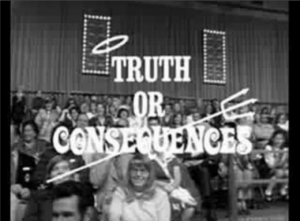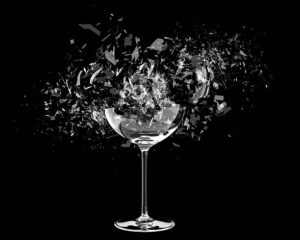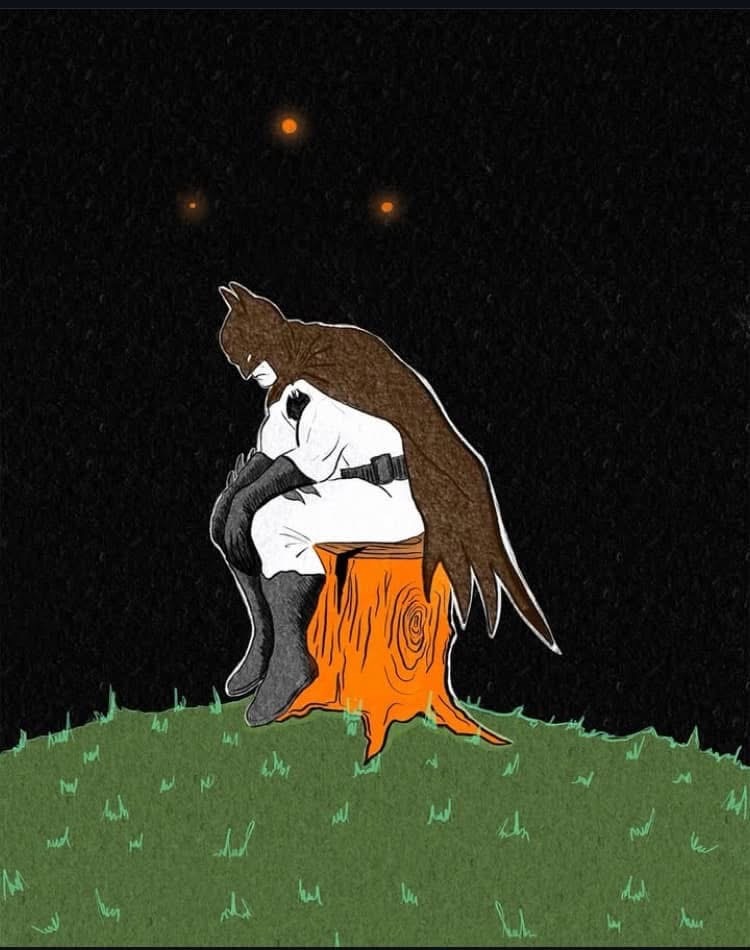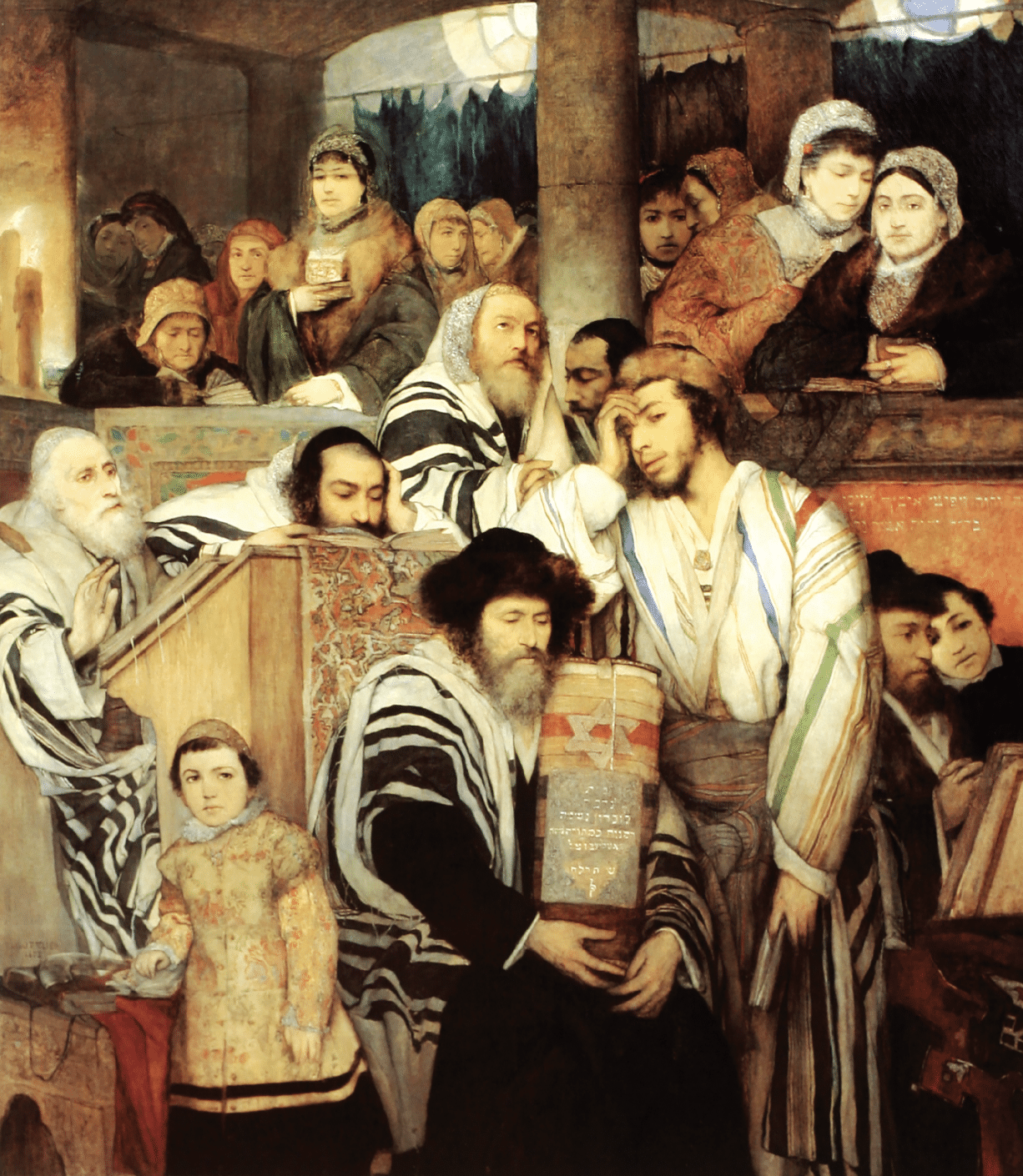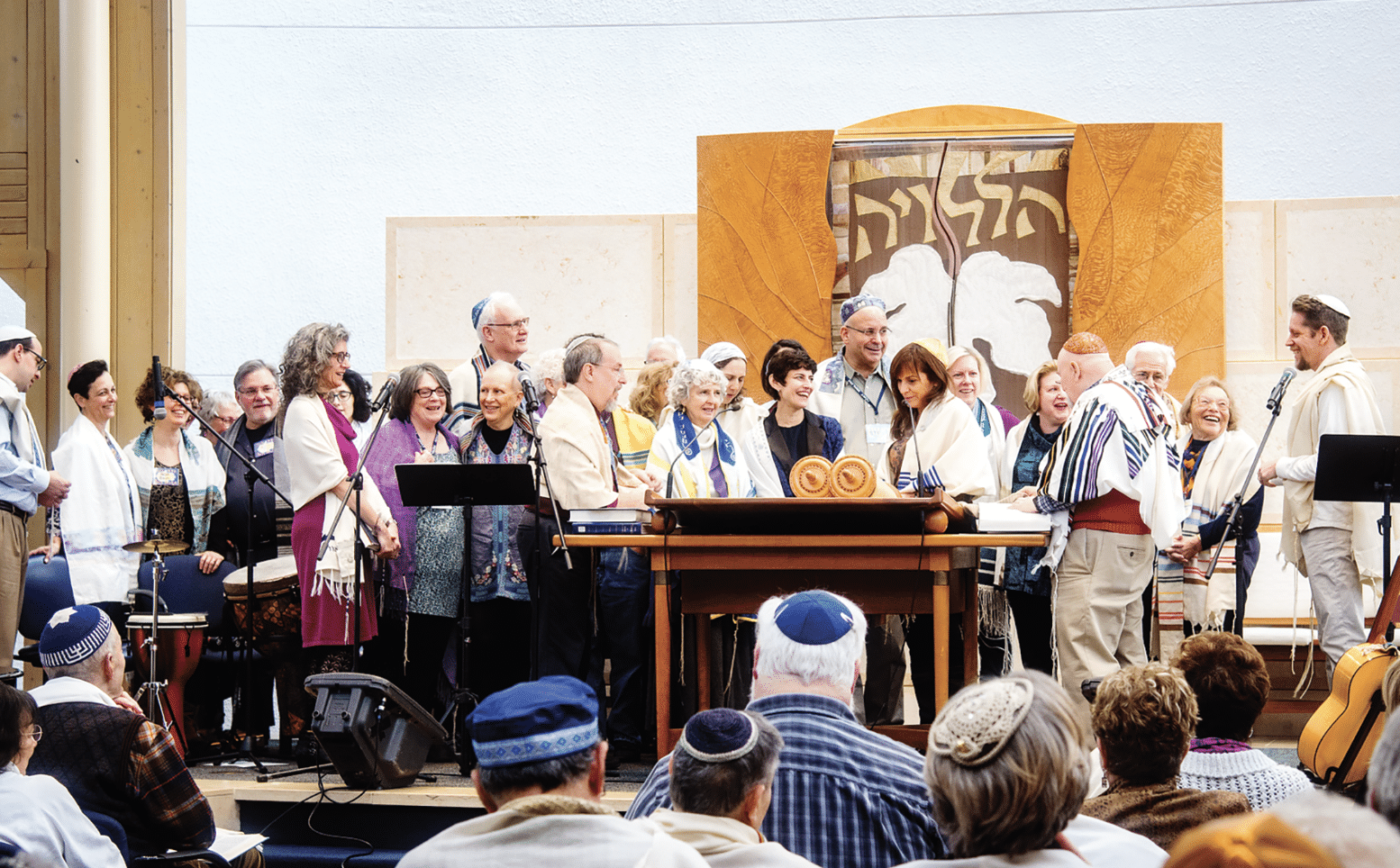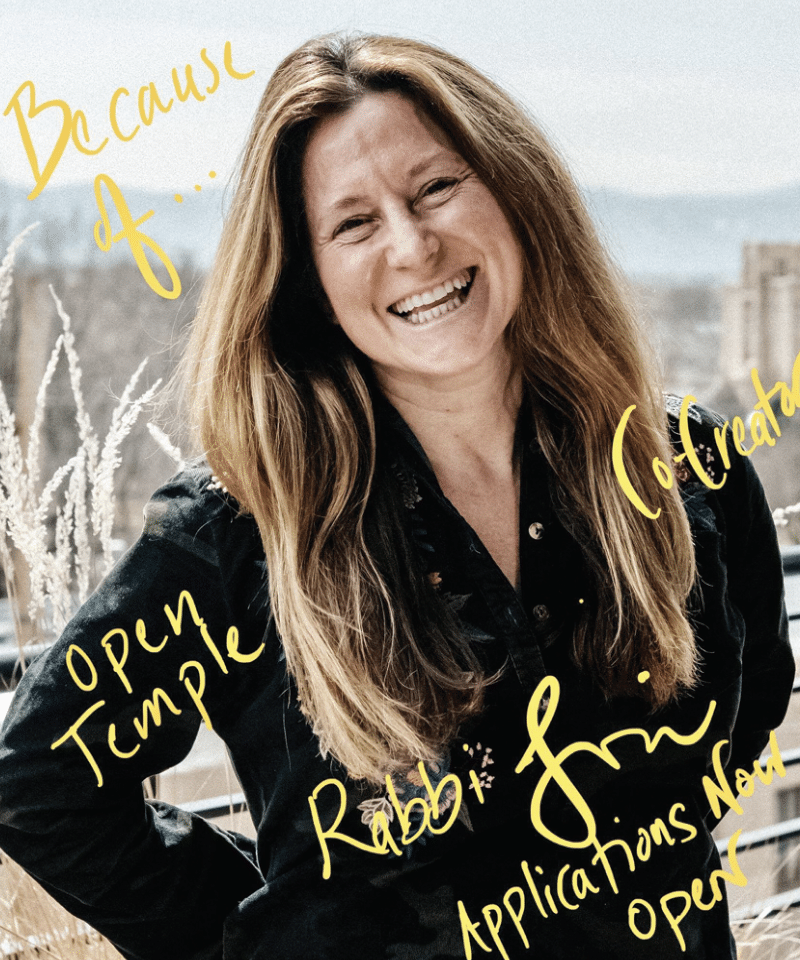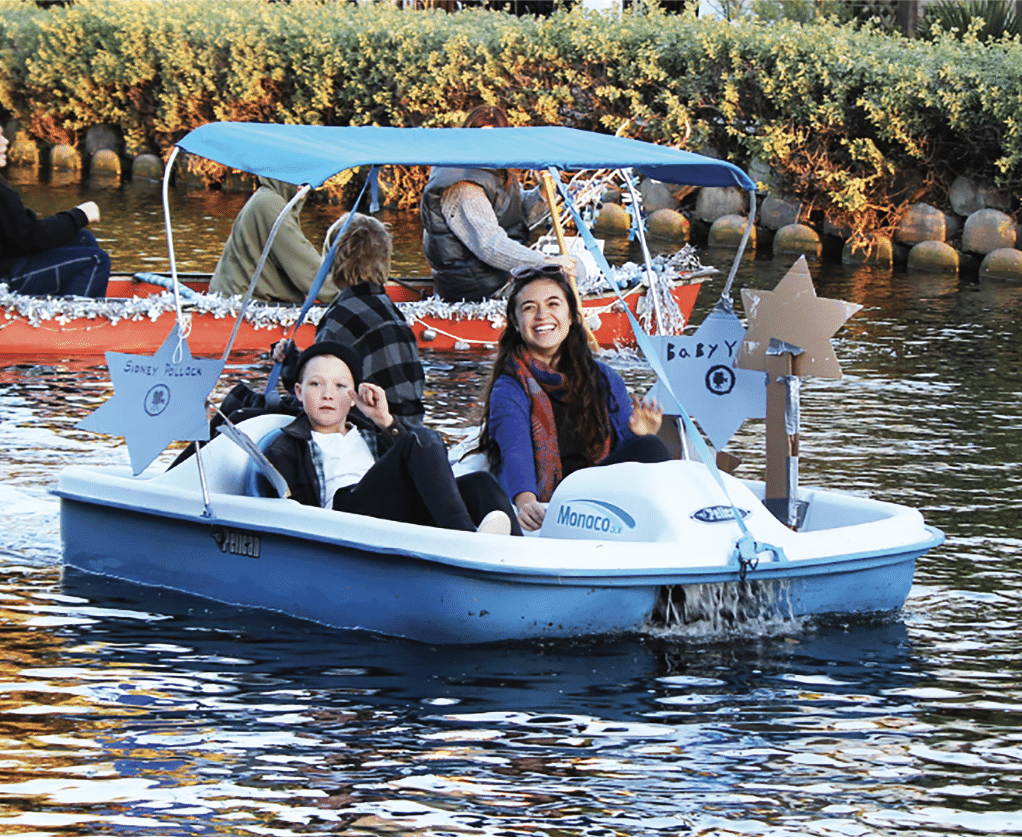From the moment I landed, it was clear that the country is exhausted. The posters of the hostages dog-eared and fading in the sun; rows of ribbed riot barriers line the streets awaiting the next protest as the heart of Tel Aviv continues to beat, albeit with an arrhythmia. But one thing is certain: Israel is changing. Rapidly. And for the better. However, this is not about the atrocities or political maelstrom, which we have heard too much about; this is about how we convert these indelible images into a message for building tomorrow.
Over four-and-a-half days, a group of U.S. clergy traveled through Israel, the West Bank and the Gaza envelope on a listening campaign sponsored by Tr’uah and J Street. Each 14-hour day spun a centrifugal 360 degrees of Israel’s reality-invested citizens (Israelis) and naturalized residents (Palestinians, Arabs, Christians and more) transforming the country in a post-Oct. 7 world.
Israel persists as a beehive of dynamic innovation through necessity – billions of IQ points from Start-Up Nation, the hearts of activists confused and transformed through the contradictions of the times we are living through. “Our allies have turned against us,” proclaimed one rabbi from a progressive rabbinic advocacy organization. All sides — left, right, center, and none-of-the-above — pivot in a dynamic post-Oct. 7 reinvention of country, citizenship, the nature of protest, and the call of duty to support Israel through this existential crucible.
Ronen Koehler, a sturdy, compact man with puckish features, may very well be the premier officer of tech CEOs in Israel. Reminiscent of the unique formula of dreamer and pragmatist of the early kibbutzniks, Ronen and his Start-Up Nation colleagues transformed public service post-Oct. 7. In mere days, he and his colleagues organized what looks very much like Israel’s first National Guard. “You see,” he informed us, “from the start, there was no one to retrieve the victims of Oct. 7. As the reserves were called up to prepare for war, there was no one left to help the citizens within Israel in need. There were people who sheltered in place in their mamad for up to three days before anyone came to get them,” he remembered.
Out of the movement seeded by Ronen and his colleagues, Achim l’Neshek (Brothers and Sisters in Arms, which arose last year to combat Israel’s proposed judicial reform), Brothers and Sisters for Israel emerged mere hours after the attacks on Oct. 7 in response to the 150,000 Jewish refugees who had to flee their homes from the Gaza envelope and the north. Brothers and Sisters for Israel began an aid campaign for these Israeli refugees and received so many donations that within four months their warehouses filled with overstock. Individuals were relocated to Eilat and the Dead Sea resorts where they organized an education system for thousands of displaced and traumatized kids across the country. They set up laundromats, provided baby strollers, sourced and sorted clothing for every shape and size, reunited lost animals with their owners, and when there weren’t any owners to receive them, found them new homes. Brothers and Sisters in Arms is the hug Israel needed through these times.
The Place Where God Cries
There is a passage in the Talmud that describes “a place where God goes to cry, and its name is Mistarim” (Chagigah 5b). The rabbis teach us that the place of God’s tears is a hidden (Moostar) location, or portal; as I walked through Israel, it was clear there were portals everywhere. Like Augmented Reality (or AR, most famously rolled out in “Pokeman Go” a few years back), real and virtual images intermix through historic plates lining the streets, animating the mythos of Israel’s history as the street itself fills with protesters envisioning Israel’s tomorrow. Israel today lives in an Augmented Reality defining its “utility of presence” as it wrestles between its past and its future.
Weaving through the country, this augmented reality reveals spaces of God’s tears with each encounter. It forces us to ask: Can we hone our senses, awaken our heart-center, turn our preconceived notions, prejudices, previous traumas and veils of pain and sorrow enough to see God’s tears? Knowing what we do from Jeremiah and Ezekiel, can we heed the call of their modern-day bewailing before it is too late? For within these teardrops are the answers, materializing as if out of thin air, of a path through these impossible conflicts and horrors. Perhaps with every tear shed, we grow more humble, more hopeful, more human.
Sometimes, the prophetic spirit lives in a place, beyond the lives lost there. Nova is a huge portal. Yet, it is still too new; this is not Auschwitz 70 years later, or “Never Again,” as the horrors continue right now, just a few miles away. This site is a living grave, as parents gather around photos of their children, lighting candles marking a birthday (or death day), where barely eight months ago, young people danced, made love and moved to the rhythms of the earth. Amid the Be’eri forest that nestled the encampment of the Nova festival, someone had affixed an unremarkable white t-shirt to a tree. A shirt worn by just about every man at some time of his life, and most women as well. The shirt swayed in the breeze, rising with an updraft, and folded in on itself, as if the young man dancing at the rave were still wearing it, freely moving his body as he felt the music. The earth remembers and still weeps, as the shirt wailing in the wind was there to remind us.
The Wailing Wall
The morning after the visit to the Gaza border, I awoke early with most of the cohort for the monthly Rosh Hodesh gathering of Women of the Wall (WOW). Formed over 30 years ago by Anat Hoffman, who has held firm in her commitment to progressive politics in Israel through these monthly gatherings, WOW has persisted as a grassroots presence in the women’s section of the Kotel (aka the Western Wall) where women daven wearing tefillin, tallitot and reading from the Torah, all rituals denied women in traditional halakhic Judaism.
As the davening began, I stood behind a seated teenager, her face pressed upon her siddur. I was told that these students come every month to disrupt WOW. As I davened, I sensed a wave of chaos approaching, drawing my eyes off the page to catch a glimpse of Jewish women attacking one another with words. As we began Hallel, I heard the abrupt movement of a chair on the stone floor, and as I looked up, saw a middle-aged woman wearing tefillin, a tallit and bright red lipstick physically push one of the girls.
Overcome with nausea, I excused myself from the cluster and found my way to the front row. I softly tapped a young woman draping herself on the ancient stones on her shoulder. “I really need this,” I said in Hebrew. As I lay my head upon the wall, a portal opened for me, as I became it.
I cried for the hungry and the homeless. I cried for the lost dogs and humans who had no one to console them, as we were all grieving. I cried for a shiva that is going to last 1,300 years.
My body convulsed. Tears flooded from my eyes. A wail rose from me like the cries of a shofar. I cried for the bubbes and the zaydes, the babies and the girls in tunnels. I cried for the baseless hatred. I cried for the abject hatred. I cried for the Palestinian children who are injured or dead or just manipulated by Hamas to pretend that they are injured and taught to call dead children martyrs. I cried for the hungry and the homeless. I cried for the lost dogs and humans who had no one to console them, as we were all grieving. I cried for a shiva that is going to last 1,300 years. I cried for the colonizing progressives, whose incredible empathy and ability to feel the pain of their neighbors ends with a territorial war between Jews at the Kotel. And as I cried, the swallows circled above like the spirit of Shechinah, who had been given no room in this pit of self-righteous prayer to join us.
Palestinian Polls and Vision – Ramallah Millennium Hotel
Israelis are not allowed in Ramallah: except for Natalie Portman, whose ads for Dior festoon the billboards there. Today we were to meet with Dr. Khalil Shikaki, a professor of political science and the director of the Palestinian Center for Policy and Survey Research. Dr. Shikaki, a former Brandeis professor and Brookings Institution Fellow, presented data both encouraging and worrisome depending on the fable woven from the formula. One particular stat stood out above all others:
One percent of all Palestinians (including West Bank and Gaza) are satisfied with the U.S.’s performance in the current war.
These stats were taken in March, 2024. In the wake of the antisemitic tsunami in the U.S., purportedly “in support of Palestinian self-determination,” this stat glared at me, spurring me to angry tears. Tears of frustration for all the efforts my colleagues are making to bring aid and attention to the Palestinian cause, tears of anger for the errant protesters on college campuses (whose efforts apparently are going unnoticed in Gaza and the West Bank), and tears of incredulity as I heard no curiosity from anyone else in the room.
Agitated, I started clicking my pen. Looking at it, I saw the words “Millennium Hotel, Ramallah, Palestine” written across it and immediately cracked a smile. In my hand was a radioactive power of self-determination. Bombs won’t create a nation; branding will. The pen made a fabulous clicking sound, and as I rapidly fired its ink on and off, my thoughts of a future alongside Palestine crystallized. You see, I reasoned, we have been living amidst our Muslim brothers and sisters since the late stages of Rabbinic Judaism; indeed, evolving alongside one another’s intellectual curiosities with mutual benefit to our spiritual traditions. And we have endured and even, one might argue, thrived, in a dance of exiles and returns. How unimaginably providential to live at a time of such tidal changes. Can we learn anything from our ancestors, I wondered, clicking the pen in and out and in and out. What whispers to us in the admonitions from the prophets, the bloody pages in the Book of Judges, the anti-heroes of Genesis, the divisive and destructive design of the House of Hasmonaeans? What moral patterns emerge through our shared Abrahamic code of poetry and human expression from evolving wisdom traditions, Jewish Kalam and Sharia Halakha woven through a shared literary history lighting our way into a brighter tomorrow? The Palestinian pen clicked…it was, indeed, more powerful than the sword.
“Dignity and hope” — a female Palestinian Geographic Information System expert and policy maker remarked — “are the only way through; we must restore one another’s dignity and hope.”
The Search for Hope in Abu Dhabi
Ignited, broken-hearted, and still curious, I left Israel for a Shabbat experience where I could try to imagine Israel’s future. I first learned about Abrahamic Family House in 2019, when United Arab Emirates (UAE) announced its “Year of Tolerance.” Opening a center designed by Ghanian-British architect David Adjaye, the center itself is a striking edifice for religious tolerance. With each unique structure resembling one another, yet with elements of symbolic and subtle distinction, this monument to religious unity and understanding drew me from Israel to Shabbat in Abu Dhabi. There, after a service led by Rabbi Peter Berger in a sanctuary fashioned after a “Sukkat Shalom,” I sat around a Shabbat table filled with an international assortment of Israeli and Diasporic Jews from the tech sector and academia, all mostly residing in UAE for work. Their discussion of UAE/Israel relations reflects a shared bond deeper than just a negotiated agreement – it is an alliance rooted in personal relationships.
One tech CEO at the table told a tale about an Emirate royal’s mother, who was sick. The best treatment that they could find for her was in Israel, so they traveled to Tel Aviv for treatment. While there, the sheikh experienced first-hand an attack from Gaza, and marveled at the Iron Dome interception in the sky. It was reported that his impression was one of moral indignation: Here was a country where they were healing people with life-threatening illness and offered care to all who needed it; and yet, there was the arc of bombs falling from the Gazan sky into Tel Aviv. As he witnessed the marvel of Iron Dome’s interceptive fires in the night sky in real time, it was reported that his feelings toward Israelis and the Gazans transformed.
UAE resembles Israel with its “Start-up Nation” mentality. Dubai presents as if someone decided to build Miami Beach on the Saudi Peninsula 20 years ago. As Emirates shares threats from Yemen mere miles away, the specter of existential destruction from Iran helps clarify what most college protesters don’t understand – the war in Gaza is less a war of Palestinian self-determination (or allegations of Israeli neo-colonialism), and more a war of resistance against cultures in the Middle East embracing progress. The Royal cities are cosmopolitan playgrounds, modern-day-marvels in the desert. If Israel has a future in the Middle East, it must follow its moral compass and affirm allies who share values of human progress through science, the arts and a vision for tomorrow. With a Museum of the Future, a Guggenheim Museum in the works and a Louvre already standing, Emirates broadcasts as a partner oasis in the Arab world rather than a mere mirage of augmented reality.
Labor Pains and Tears
The tech minyan, as one might affectionately call the group gathered for Shabbat in Abu Dhabi, were not without wounds. Almost everyone in the room had a family member in Gaza – either as soldiers or hostages – or lost someone or was nursing someone with trauma post-Oct. 7. The hope these individuals cast drew from the same web as Ronen, from Brothers and Sisters for Israel, and his tech colleagues. Listening around the table at how these men and women were fostering relationships through innovation and technology, I was reminded of a perfunctory visit from one of the few Labor Party members left in the Knesset earlier that week. Rabin’s party, which championed the peace process, now measures as anachronistic, an ideology formed in the last millennium, as Israel has moved from labor of the land to a new kind of labor.
These tech colleagues represent the potential of a new Labor Party, one resembling the Abraham Accords, and extending its partnership as a new, cosmopolitan Israel akin to the Northern Kingdom’s Biblical Israel. It is taught that the builders of the ancient Temple in Shiloh, in the Northern Kingdom, following the fall of the unified Kingdom of Israel, affixed a relief of Ba’al, a god of the Canaanites, at its entrance. It was there that Hannah prayed for a child, who would come and find David, who himself would conceive a child with a Hittite who would build a Temple and through this bloodline, in the Augmented Reality of the Rabbis, shall come the messiah.
The stories from our biblical scribes offer our most ancient form of innovation technology, where Jewish ideas acted outside of rabbinic rebuttal or review. Today’s Israel, a teetering democracy, is being asked to recognize a moral god and return to its biblical roots as a mosaic tradition, as we innovate a peaceful future through nanotechnology, micro-processors and medical devices— miracles and marvels that benefit all humanity. Today’s Start-up Nation houses the Temple of Tomorrow. On the walls of this modern-day temple there is a benediction, written in Hebrew, Arabic and English, like the parking garage of the Abrahamic Famly House, welcoming all who find holiness through the labor of collaboration.
But, with labor comes tears. The work ahead of us is an impossible puzzle and hero’s journey not for the faint-hearted. Tears from these labor pains of “something new being born” make it hard to see and challenge our prejudices while triggering our fears. Only leadership with the most flexible of minds and hearts can lead us through this portal of God’s tears.





